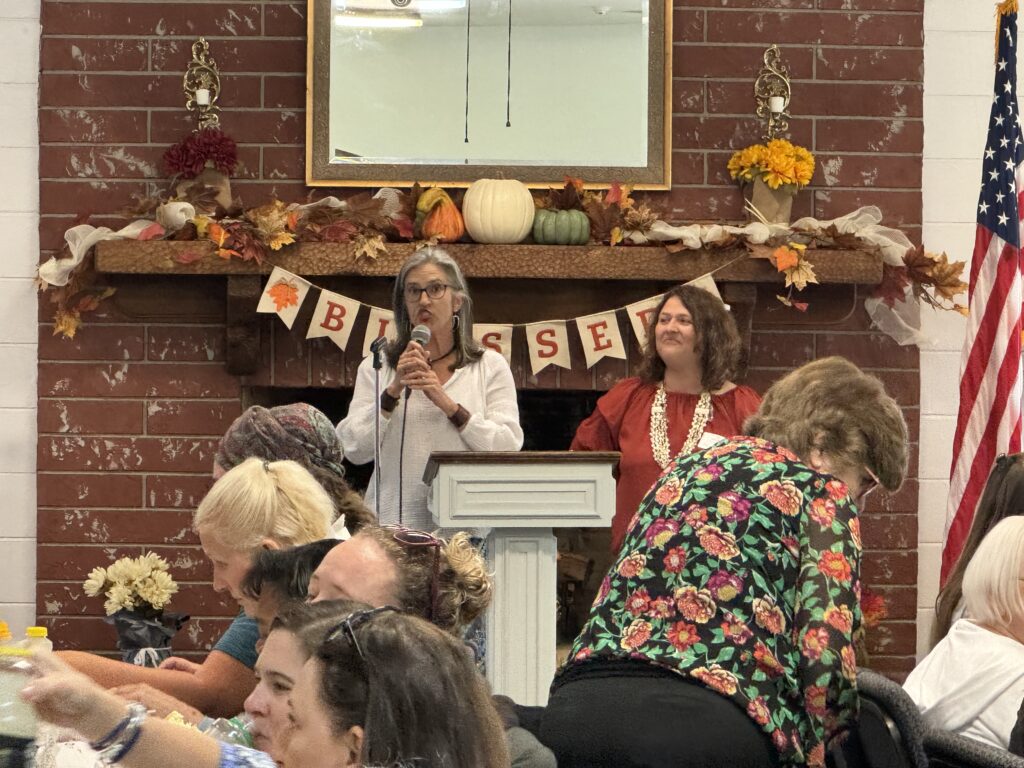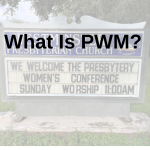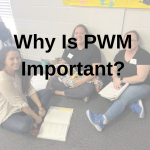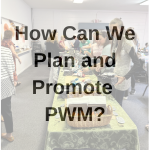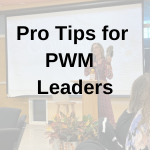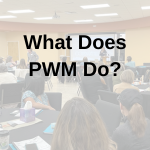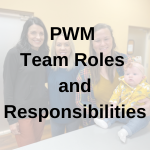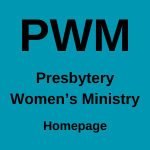This section contains some edited Q&A with CDM’s Women’s Ministries Trainers and CDM Director, Stephen Estock with questions posed after Training sessions at Transformed conferences in 2016.
Throughout Scripture, we see God calling individuals to himself and placing them into the covenant community (e.g., marriage, families, Israel, and the Church). Mankind’s sin nature is prone to work in ways that hinder or destroy community life (1 Corinthians addresses this issue in a number of ways); consequently, we must be watchful for philosophies and practices that detract from nurturing community.
At the same time, we see examples of women working together as a group in ways that bless and build community and ministry. In Exodus 15:20, Miriam led “all the women” in a celebratory song about God’s deliverance. In Exodus 38:8, there is a reference to women who ministered in the entrance of the tent of meeting. In Luke 8:1–3, the evangelist mentions the group or women who traveled with Jesus and supported the ministry (the implication was they worked together). One explanation why it took a day for Joseph and Mary to realize Jesus was not with them after the Passover was that the men and women traveled in gender-specific groups (The text is silent, so such a conclusion is tentative at best). In Acts 9:39–41, there is a reference to “widows,” who apparently were gathered as a group within the community of the church.
A Women’s Ministry within a congregation is one of the circumstances of the life of a church which is “common to human actions and societies, which are to be ordered by the light of nature, and Christian prudence, according to the general rules of the Word” (WCF 1.6). In the PCA, a healthy Women’s Ministry is one that contributes to the overall health of the covenant community, rather than existing as an entity unto itself. ~Stephen Estock
God designed woman to be a helper fit for the man (Genesis 2:21–22). Consequently, God established the husband as the head of his wife (1 Corinthians 11:3), and men as the authoritative leaders in the church (1 Timothy 2:12). The specifics of how men and women live out these roles in the local church varies according to culture. For example, Paul commanded the women of the church in Corinth to wear head coverings as “a symbol of authority” (1 Corinthians 11:10). Yet, most Christians today, even those who embrace the Bible as the inerrant and infallible Word of God, believe head coverings no longer communicate the same thing in modern cultures, and women are not required to wear them. Consequently, faithful Christians must exercise discernment as they apply the transcendent truth of Scripture to the specifics of the culture in which the church exists.
Mankind’s sin nature will often lead to a failure in accurately applying scriptural truth. The circumstances and pressures of a culture can lead either to 1) practices that disregard God’s Word (a.k.a. “too liberal”) or 2) practices that are more restrictive than God’s Word (a.k.a. “too conservative”). Church leaders are accountable to God for ensuring church practice aligns with Scripture and resists the cultural pressures to stray from the truth. The temptation to allow culture to shape practice more than the Word of God is constant, and the struggle is great. Only through continual prayer will leaders be able to discern “the Holy Spirit speaking in the Scripture” (WCF 1.10) and understand how to live in obedience. ~Stephen Estock
At the most obvious level, only a woman can give birth, and the offspring of the woman would bruise the head of the serpent. Salvation comes through woman as the Messiah is born of a virgin (i.e., apart from the work of man). Yet, Adam exercised authoritative headship in naming his wife “Eve,” as she was mother of all living. In naming his wife, man remains the leader in the covenant community. Woman plays a necessary life-giving role in overcoming the Fall, a role unique to the way God created her.
This unique role, ultimately fulfilled by Mary when she gave birth to Jesus, is a picture of the many ways women give life to the covenant community. In Joshua 2, Rahab was the instrument through whom God spared the spies at Jericho. 1 Samuel 25 records how Abigail spared the life of Nabal and preserved the integrity of David’s reign. Luke 8 records a list of women through whom God provided for the preaching ministry of the Messiah. In the greetings of Romans 16, Paul mentions a number of women who were instrumental in his ministry to the Gentiles. The life-giving roles of women in the covenant community are varied, as they seek to fulfill faithfully the God-given design of complementary helper to the man. ~Stephen Estock
I love that you began your questions with a description of the diversity of the women in your church. Every group of women has some common characteristics, but because we are human, there will also always be characteristics that diversify the group. It is good to be mindful of both! Sometimes they are obvious, and sometimes they are hidden very deep. We tend to plan based on our own needs/likes, and it is very important to always be mindful of expanding our borders.
When you form a leadership team, be sure to work with your Session leadership. Have them help you determine what this group will work toward accomplishing, and when and how decisions and plans should be approved, and how to be sure the Women’s Ministry supports the overall work of the church as a whole. In choosing women for your leadership team, look for women who have demonstrated leadership already, and who reflect the diversity of your church congregation. Think: who are the women who are falling through the cracks of current ministries? Are there women who have demonstrated leadership already who can help you include those women?
You could begin by praying for a small group of women that would see the need to think intentionally about what you should do in Women’s Ministry. Depending on the size of your church, it might be that it is just you and one other woman, or it might be a little larger group. Think in terms of the diversity you mentioned. Who are women who share some of those different characteristics? Think about which women you share characteristics with, and then pray that God would lead you to women who understand/share others. Ask these women if they would be interested in meeting together with this group and go through one of the books listed in the next answer, and pray together for direction for this new ministry. Be clear that you are not asking them to serve on a leadership team, only to meet together to think and pray about what your church needs in this area. Discussing one of those books will help reveal women with a heart for this ministry.
If you decide to go ahead and form a leadership team, you still could use part of your meeting time to discuss one of those books to help make sure everyone is on the same page.
There are a lot of tools that you can use to begin to equip yourselves to lead a Women’s Ministry. Two books that are directed to Women’s Ministry leaders are: Leadership for Women in the Church, and Women’s Ministry in the Local Church. Discussing this material will help you begin to determine what you need to do by understanding the “why’s.” You can also check out the Women’s Ministry Resource page on the website www.women.pcacdm.org.
Women who attend your events have diverse real needs, and diverse felt needs. Everyone has that topic that is almost always at the front of her mind, and for mothers, that is usually their children. But they also have many other needs that Women’s Ministry should address. These real needs are shared by women across very diverse demographic backgrounds. Women do have a need to have some chat time, but being intentional about generating discussion on topics outside of the first thing on your mind can lead to connections with women that we would not naturally gravitate toward. Being intentional about finding an ice breaker activity, or crafting one or a few “get to know you” type of questions can be a great way to gently guide the chat time at an event. There are always some women who can too easily dominate the conversation, and some who will be reluctant to share, so you might give everyone a goal to find out at least three (or some other number) other people’s answers to the question(s).
While you always want events to be welcoming to new people, remember that there are some activities/events that are more appropriate to the unsaved/unchurched than others. There is a wide continuum of spiritual knowledge/background among the unchurched, and it might be appropriate to invite some of these women to some of our activities. But Jesus intentionally took time to have conversations with his disciples away from the crowds, and they discussed topics that He did not go into with a broader audience. Some topics were only discussed with an even smaller group of Peter, James, and John. Although you always want to be sensitive to an unplanned opportunity to reach out to someone, be careful not to sacrifice teaching time that needs to be done with more mature women to attempt to make every activity appropriate for unbelievers.
Your Women’s Ministry should have a very clear overall purpose statement as to what you are working to accomplish, and you should from time to time evaluate where you are doing a good job and where you need to be more intentional about filling gaps in the ministry.
The goal is to have a variety of activities/events all or almost all of which are inviting to women outside your local church body, and some of which are, by design, welcoming to women who are unbelievers. We always need to be intentional about reaching out to women (sometimes within our own church) who very often find it easier to isolate themselves rather than become part of a community.
There should be some events with an intentional focus on inviting women who are unbelievers, and/or women you are unsure of their faith. Choosing the topics for these requires creativity and knowledge of your intended audience. Sometimes it means having some activities that require you to leave your building and go to where some of these women are. Sometimes it might mean having gatherings around food, hobbies, books, parenthood, singles’ issues, grief, or other areas of life where you can find areas of common interest with unbelievers or unchurched women. Look for ideas that will be non-threatening, broad interest fellowship themes. You might include a 5–10 minute VERY basic devotion.
Example—one church had a home herb planting fellowship highly attended by friends and neighbors of church members. It was an outdoor, spring activity, with all items provided (little flower pots, soil, herbs to plant, trowels, etc.). The devotion was on Jesus being the vine we are attached to, how the vine is where a plant gets what it needs, and how this is a metaphor to seeing Jesus as our source of needed nourishment. Very low key gospel presentation. This drew a few unsaved ladies to attend future fellowships on different themes. The important thing is to make sure your church is a safe and inviting place for them, no matter what they reveal about themselves.
Since every church’s ‘personality’ is different, the practical/visible application of Session oversight looks different from church to church. Basically, your church Session is your guide and protection. But no matter how this oversight looks, the Women’s Ministry role in this relationship is to be life-giving helpers. Some life-giving things you can practically do to facilitate this:
- Have a mission or purpose statement for your Women’s Ministry that reflects the goals and mission of your Session for the church (and let the Session know what it is.) Check out women.pcacdm.org under the Resources tab for help with this.
- Even if the Session is not specifically tasking the Women’s Ministry team, make sure that in some way, they know your plans, events, and Bible Studies and teachers before you execute your plans. Also, be sure to encourage them with any specific ways you have seen God’s blessing and work through these efforts.
This question boils down to ‘What is our Women’s Ministry supposed to look like in contrast to other ministries in church where women serve?’
The over-arching goal of an organized Women’s Ministry should be to encourage and equip women to: Reflect the character of God (Creation/Covenant) in all arenas of life (Kingdom Discipleship), including the church(Church).
I put in brackets around topics from our Women’s Ministry Training that inform this statement. So with the training in mind, here are some questions to ask:
- How does the Women’s Ministry Team provide ways to equip and encourage the women on the Shepherding team, or any other church ministry where women serve, to reflect God in their ministry? (Could be through Bible studies, discipleship class, prayer times…)
- How does the Women’s Ministry team equip and encourage women to come along side other ministries of the church? (Ideas: help as a women’s group with special projects in church. Integrate in some way with other church ministries, like Bible studies with older women and teens. Plan an event that highlights other ministries.)
- How does the Women’s Ministry team equip and encourage the women of the church to reflect God’s character in all arenas of life? Yes, we don’t want a Women’s Ministry that is running on a separate orbit from the church. So, again, go back to mission/purpose statement to keep on track of supporting the church. As a Women’s Ministry Team, your goal is to encourage your women to support their church, so as you plan that is your focus.
But that does not mean that individuals in the church won’t have ‘outside’ ministries as well. Plus, they have a role in all of life that is not directly related to that church ‘building’ but is ministering in God’s Kingdom. Therefore, Kingdom Discipleship will encompass equipping and encouraging in these areas also. (Ideas: give opportunities to share with each other how their jobs, hobbies, or passions reflect God’s character. Integrate groups with different ages, stages, professions and interests to avoid one track focus…)
Making application will take time and much prayer. And prayer is where you begin with all of this!
—How do we know where the problem is? Is it the husbands—are they really that selfish and refusing to help? Is it the women—are they afraid to leave their kids/trust their husband? Is it hard to leave because there will be more mess when they get home? (but is that a good enough excuse not to come?)
—Is being a young mom really only about survival, and is Women’s Ministry just not an option for that life phase—are we expecting too much? Is a day time study that comes with free child-care really the only option? (from what I’ve heard some moms can’t/won’t even do that as it interferes with naps…) How can we help convince these moms of the great value Women’s Ministry/Bible study can add to their home life if they never give it a chance?
Answer:
Moms with young children are probably one of the loneliest segments of the Body. In the midst of all the activity of their households—namely the young children—they can and do feel quite isolated. Many go into parenting with the idea of sweetness and light being the rhythm of their days with these precious kids. The reality of smelly messes and constant interruption of thought and activity is jarring and frequently leaves them thinking the chaos is connected to personal inadequacies or their kids’ inadequacies. And that place is lonely. The idea of engaging with others is so attractive, but the reality of everything it will take to be able to engage with others often leaves them giving up before actually trying.
To engage with young moms means truly walking where they walk as they walk it. And that looks a lot of different ways. Maybe it’s showing up at her house in your own holey yoga pants and stained t-shirt to sit in her kitchen and feed the baby while she wrangles the toddler. Or going to her son’s preschool teddy bear parade to take pictures for her. Or meeting her at the mom’s restaurant (Chick-Fil-A) to have constantly interrupted conversations around chicken nuggets and apple slices on the floor.
The point is, the reality of engaging with a mom of young children at home more often means entering into where she is rather than expecting her to do “all the things” that will get her out of the house to engage with you.
That doesn’t mean we don’t organize get together opportunities that are out of the house, but are we willing to have those times be a little messy for the sake of the moms? For example, have a Bible study at a playground where everyone pitches in to watch the kids. Or childproof a couple of rooms in your house and invite the moms with the kids over to the house. Have the kid friendly snacks and drinks. Maybe invite a homeschooled teen over to be a mother’s helper during that time. Expect the interruptions and don’t let them deter you from the point of connecting with these moms.
—How do we know where the problem is? The problem is never just one thing. The examples given of “is it the husbands” or “is it the moms”—the answer is a complicated yes and no. For the husbands who are overwhelmed, selfish, weary from work, and so on that for him the idea of his wife going out at night while he wrangles bath time and bedtime can elicit a less than gracious response when his wife communicates her desire to attend a study.
For the mom, who is overwhelmed, selfish, weary from work at home and fearful, the idea of everything that has to be done to set up the “perfect” scenario to make it “easy” to leave can make all the work seem not worth it.
I suspect if your Women’s Ministry is getting the answer “there’s more mess when I get home” then potentially that is a deflecting excuse from the real reason. Getting to the real reason requires some transparent evaluation of what Women’s Ministry is offering them. Humans love the default. And the default in this case is not going to the effort to get to an evening event. However, everyone knows we will each move heaven and earth to get the sitter, arrange the bed time, design the “perfect” scenario for our husbands to handle the kids if, IF, we truly want to go out somewhere in the evening.
So the answer, the reason, has to back up to what are we offering them? To ask that question is not to suggest a dog and pony show or trivial entertainment or diluted contextualization of our studies. It is to make sure that our Women’s Ministry is not personality driven, program driven, or market driven, but instead gospel driven. And gospel driven is harder because it requires laying down our lives for others and being willing to enter into their messes, their less than easy scenarios, and accepting even with all of that sacrifice that some women will still choose not to participate.
—How can we help convince these moms of the great value Women’s Ministry/Bible study can add to their home life if they never give it a chance? A conviction/sense of responsibility to church occurs when truth content regarding the church is taught in the context of relationships AND the Holy Spirit impresses the hearts of these parents with that conviction/sense of responsibility. Remember the conflict reflects the tension between this world and God’s kingdom—a spiritual warfare of two kingdoms and world views. The responsibility of the Church, pastor, or Women’s Ministry is to offer solid truth with persistence and trust in God’s work among His people.
The responsibility of Women’s Ministries is not to do the convincing. Convincing or heart change is always the work of the Holy Spirit. The responsibility is to have God as our reference point for our interactions, have God’s Word as our authority for our teaching—being the content of our teaching—and exercise covenantal community to one another in expressions of compassion, nurturing, supporting, delivering, and so on—the fullness of helping as God is our helper.
The work of reaching out to others is a consistent work of obedience and sacrifice with a long-term view. Keep before you that your work is done unto the Lord and not for attendance numbers or results. Be encouraged that your impact/influence on one life is more than significant in God’s economy. Trust that as God works in you for the equipping to serve this demographic, He is also working in those whom you serve.
They need a personal invitation, most likely. Not an announcement, not a handout, not a sign-up sheet! But a “come with me and see what you think! I can pick you up!” At that age, is childcare an issue? Is Women’s Ministry providing it? Are they career gals who need an evening study or a Saturday time? Also, are there any late teens or college gals, etc. on the WM leadership team? But mostly, a face to face invitation works best for all ages!
Here are a few practical ideas. Make sure you are offering things at different times, on different days, and even different frequencies. We have morning and evening studies, some that meet weekly, some every other week, and some just monthly. I think providing childcare, especially during the day, is a huge pull for these young moms.
I would have conversations about what their needs are as women and how you could potentially provide opportunities for their needs to be met. Their felt needs should not dictate what we do but as we hear their heart we understand them better and begin building relationships for discipleship ministry. Perhaps if they have formed some kind of opinion or view about what Women’s Ministry is, instead of sprinkling their ideas into already existing ministry, create something new. Another thing that worked for me was inviting women to be in charge of one of our major women’s gatherings during the year. They took ownership of that, got excited about it, and even began to get excited about Women’s Ministry in general. I also have representation from every generation on my ministry team. They communicate better with their peers and are better able to encourage them to be involved. Make sure that you always communicate why you are doing what you are doing—they must feel like it is valuable.
Events, studies, etc. will not draw them out but real, authentic relationships will. It is not easy. You are probably saying if they don’t come, how can I be in a relationship with them? How are you and the other ladies that long for them to be a part of the ministry stepping into their lives? Invest in them—invite them to lunch, offer to keep their children, write them notes, ask them how you can pray for them. I would encourage you to not wait for them to come but to move towards them in very practical, tangible, and relational ways. Remember our goal cannot simply be to have all women attend but rather how can we encourage and equip all women. I know it is easier said than done. Know that I am in the trenches with you.
It sounds like you are referring to women who are already teaching/leading, not training new leaders. I think it is wonderful that you desire to come alongside them. I actually meet with my small group leaders once a week. At times, I have felt like one more meeting was too much but really have continued at their request. We pray, they ask me questions regarding lessons, and we talk through any specific concerns they have about their individual groups.
I have also found that simple things like emails, texts, calls, and notes that simply let them know I am praying for them and am available if needed, go a long way. My women respond very well to these simple gestures. In the same way that our Women’s Ministry need to have content in the context of relationships so does our leadership training. Knowing that you are for them and available helps encourage and equip them to continue to use their gifts for the building up of the body. Also, asking where your leaders sense that they need additional training might be valuable. This will provide direction for your time together.
There are lots of valuable resources that can used for training and equipping leaders available. CDM is committed to connecting people to people and people to resources.
- There are two-minute training videos on the PCA website, women.pcacdm.org with discussion questions.
- You might consider reading and working through a book like Women’s Ministry in the Local Church, Life Giving Leadership, Daughters of the Covenant, or Women of the Word.
- The Women’s Ministry Resource website women.pcacdm.org and also Titus 2 Tools are great resources for training, small groups, relationship building questions, icebreakers, etc.
- Women’s Ministry Trainers bring training to your local churches and presbyteries.
- Leadership Training annually during the month of February in Atlanta.
This is certainly not an exhaustive list but gives you an idea about some of the resources available to you.
This is also addressed in the previous answer.
As we create ministries that have a tension of rich, biblical content in the context of gospel relationships, I think we will begin to see transformation in the lives of our women and also others drawn in. We must teach the foundational truths of the covenant, church, and biblical womanhood as we provide safe places for women to learn, grow, struggle, and use their gifts for the good of the body and the furtherance of God’s kingdom. Life-on-life discipleship will help to pass the baton and will value the wisdom and experience of all stages of life. As women are encouraged and equipped within the walls of our churches, it will impact our communities. Their spheres of influence will be impacted by the transformation of their own lives.
The best place to start is with two resources available to you through CDM. One is the book Spiritual Mothering by Susan Hunt and the other is called Titus 2 Tools also by Susan Hunt. I would suggest your women’s leadership team going through them and then inviting other women to also study these tools. Once you have a core group of women who are well versed on the ins and outs of mentoring, this model should continue to grow as more women will be encouraged to learn how they can become spiritual mothers to others in your body.
Sometimes following our Titus 2 mandate is first and foremost a mindset. Using a church-wide fellowship with the theme of Gospel Friendships can be a great “back door entry” into this arena. God gives women these Titus 2 directives regardless of whether or not our church has an organized structure for older women teaching younger women. Within the PCA we have lots of wonderful studies, resources and training available on how to create a formal ministry that uses Titus 2 principles. But discipleship should still happen on the way to a more formal program. Look at Titus 2:1 again. “But as for you, once your Women’s Ministry program has at least 26 women participating and 4 annual events, then teach what accords with sound doctrine.” NOT! Even when our church or Women’s Ministry DOES have a formal Titus 2 program, we can completely miss out on the awareness that every friendship we have as a redeemed woman is a Gospel friendship that can fulfill God’s call given to us here. We don’t want to miss real-life situations and discipleship opportunities that arise naturally out of these Gospel friendships. If you are a redeemed woman who is part of God’s church and has a friend or wants a friend, then you already have God’s calling to glorify God in this way.
Teaching and learning should happen in any Gospel friendship, no matter how it begins. Women mentoring women, women discipling women should transform us to THINK BIBLICALLY! LIVE CONVENANTALLY!
Sometimes the content is about becoming/ being a disciple, what to believe (doctrine). We are learning how to THINK BIBLICALLY. Other times, the content is all about how to live, what to do, the
of a Biblical world and life view. We are becoming “new creatures” together; we are “iron sharpening iron.” We are learning how to LIVE COVENANTALLY.
You say you feel the Women’s Ministry is event driven because the focus has become the events themselves: having an event for the purpose of having an event. Events can be great tools for accomplishing bigger goals, but if the event is not designed with the overarching goal in mind, it will have little long-term results. Starting with a purpose statement for your Women’s Ministry that dovetails with the Session’s mission and goals for the church is a good beginning. It keeps ‘great idea events’ in check. Also, to help evaluate a specific event as you plan, there is a downloadable Women’s Ministry Diagnostic tool on the CDM Women’s Ministry website. www.women.pcacdm.org in the Women’s Ministry Resources Tool Box where there are many helpful resources.
However, no matter how good the event is, it does not replace consistent discipleship. There are many ways to do “women discipling women,” but having a Kingdom Discipleship focus, where discipling is the application of God’s rule and Word to all arenas of life, is life equipping. It is the picture of Titus 2 where we are told to take doctrine (that the pastor teaches) and apply it to all arenas of life for the next generation. This may possibly look different than the typical teacher/student Bible study, or prayer group, or same-interest group.
This is where prayer and creative thinking come together. I know, I know, I didn’t give you a 3-step plan! However, I am enclosing a chart that was shared at a Women’s Leadership Training conference in 2014 that was devised for the women’ discipleship class at my church. It is not intended for concrete answers, but rather to help start creative thought. I hope it gives you a framework you can use as you define your own goals, determine your obstacles, your plan, and your anticipated results as you pray for guidance, wisdom, and creativity!
Bible Study Conversations
Kingdom Discipleship Example
Purpose: Discipleship class that models Biblical teaching that transforms all areas of life
| Goal | Obstacles | Plan | Result |
| Keeping Scripture in heart and mind | Time and commitment | Choose Scripture passages that correspond to the lessons. Learn together over a period of time | Learning together helps those who haven’t practiced at home or are uncomfortable reciting. Spending time together allows for thinking through meaning of passage |
| Teaching and Learning the Word | Teacher burnout, avoid disciples of a personality | Use more than 1 teacher, older and younger teachers, use a lesson book, | Relieves pressure for a teacher to prepare every week, have many personalities to hear from, study book allows many to be able to teach, cross generational in using teaching gifts |
| Biblical Worldview—how do we reflect God’s character in everything we do | How are we going to design that! | Each person talk about something they do—job, hobby, passion, etc. and communicate how this is reflecting God’s character | Helps all see how everything is God’s kingdom, everyone learns something new, we all learn more about the person presenting, making personal connections |
| Goal | Obstacles (present and to avoid) |
Plan | Result |
| Supporters of the Church | Bible study not become a ministry of its own nor be the producer of ministry outside the church— (not a separate orbit from church) | Not structurally, but organically come along side others in the church and church’s ministries | Builds community with others in church while serving. Examples: visiting health institutions where church has ministries, make centerpieces for evangelistic lunch, send exam goodie boxes to Covenant children in college |
| Enter each other’s lives—Community | Regional church—live far from each other, cross generational class— (normally good thing :>)), prayer times too short and static | Organically notice needs of others and come along side by being flexible to drop our “study” plans for others’ needs.
Prayer— concentrate on long term prayer requests. Praying for same request all year. |
Opportunities to love on each other, Examples: moving help, helping after a robbery, celebrating and sorrowing together
Prayer: entering into hearts together and at end of year seeing God work |
| Incorporate it all! | TIME! | Time: Go to an every-other-week format for teaching and applying. One week being teaching and learning Word through lesson and scripture memory. Other week devoted to presentation, serving church ministries, serving church, serving or celebrating each other. Be flexible to change “plans” to apply God’s Word to real needs. | Valuable time spent in learning God’s Word, building community, brotherly love, devotion, and love for the church! |
This is an encouraging question! Thanks to CDM (our PCA Committee on Discipleship Ministries), none of us needs to feel that we are in this alone. The motto of our PCA Women’s Ministry Coordinator, Karen Hodge, is “here to serve.” A good place to start seeking guidance is the CDM website (www.women.pcacdm.org), which offers a plethora of resources from Bible Study suggestions to icebreakers. I highly recommend the two-minute videos on many different topics under the “Connection Series.”
Also on the website, you can check out the rest of “Your Ministry Team” that is here to serve you. Karen Hodge can connect you to a Women’s Ministry Trainer who will come to your church or presbytery to present a training conference and consult with you about your specific situation. In addition, you can find and contact your Regional Advisor (www.women.pcacdm.org/womens-ministry-leadership/ ). They are here to help as well. Feel free to email her about your needs or to set up a phone conversation. She will be able to connect you with others and support you in prayer. Be sure to tap into the resources God provides through our broader covenant community as you engage in kingdom building where you are!

